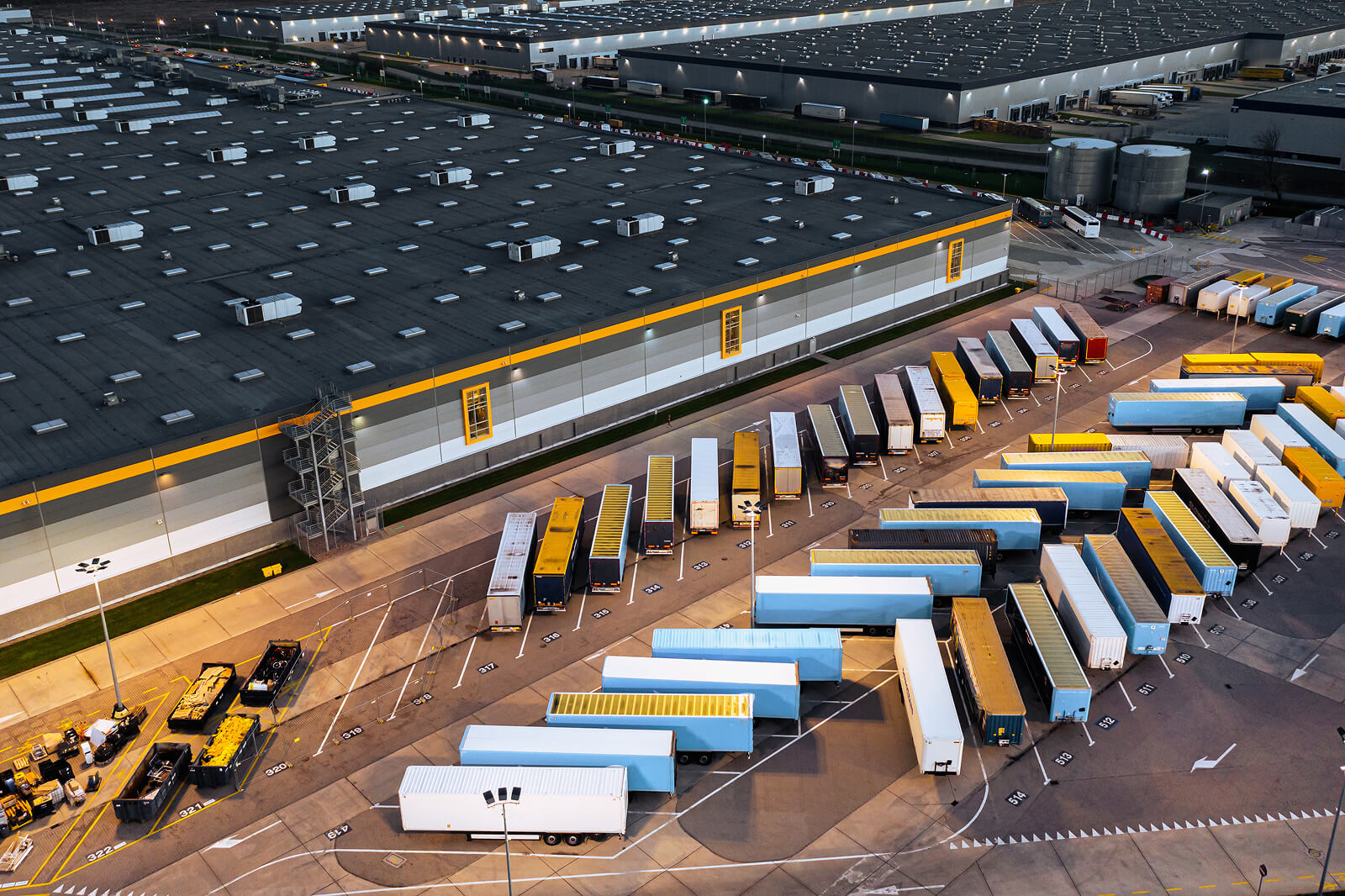
How yard management systems connect warehouse and transportation for maximum efficiency
Picture this: A truck pulls up to your facility. The driver’s been on the road for hours. Your dock team is ready for a shipment, but not necessarily this one. Your warehouse has inventory staged for outbound loads, but possibly not the one that just arrived.
Sound familiar?
For decades, logistics yards have existed as curious no-man’s-lands between warehouse operations and transportation networks. They’re the physical handshake between your carefully orchestrated warehouse operations and the unpredictable world of over-the-road transportation.
But here’s the problem: this handshake is often more of a fumble.
If you’ve spent any time in supply chain management, you’ve likely witnessed the disconnect. Transportation teams optimize routes and ETAs. Warehouse teams perfect pick paths and labor planning. But the yard is often left to operate with clipboard-wielding staff who manually coordinate between these two sophisticated systems.
Despite investing millions in WMS and TMS systems, teams are still playing phone tag with drivers and dispatchers just to figure out where trailers are in their own yard.
That’s because traditional yard operations aren’t designed to be connective tissue — they’re designed to be holding pens. This gap can cost the average distribution center between $200,000 and $400,000 annually in excess labor, detention charges, and missed delivery windows.
Many companies have taken steps toward digitizing yard operations. They’ve replaced paper logs with digital check-ins and yard checks with RFID technology. But digitizing a broken process doesn’t fix it, it just makes it break faster.
The real opportunity lies not in digitizing yard operations but in orchestrating them with intelligent yard management systems. When we look at the entire process flow of a trailer pickup for customer delivery, we can see how many touchpoints exist between a scheduling request and final delivery.
Take a straightforward example: A trailer moving from a Smithfield production facility to a Walmart distribution center. This single journey touches scheduling, yard operations, transportation tracking, driver communications, gate processing, and dock operations — all areas traditionally managed in silos with their own priorities.
What makes true yard automation revolutionary isn’t the technology itself; it’s the orchestration. More than just executing tasks, AI agents coordinate across functions to ensure smooth transitions, creating a truly automated yard management solution.
Consider how this plays out in modern yard management software:
The magic happens not within each of these components, but in the seamless handoffs between them — a hallmark of next-generation yard management solutions.
Traditional yards operate on queues. First in, first out. Priority trailers jump ahead. Everyone else waits.
But what if your yard operated on outcomes instead?
Imagine an automated yard management system that doesn’t just know a trailer exists, but understands what it contains, how it affects customer orders, how it impacts production schedules, and even how detention costs might accrue if it sits too long.
That’s what AI-powered yard orchestration delivers: processing the right trailers, in the right order, to drive business results.
A global food manufacturer recently discovered that by implementing AI-driven yard management software, they improved on-time delivery by 26% while reducing yard labor by 30%. Their secret wasn’t moving trailers faster — it was moving the right trailers at the right time through intelligent yard optimization.
Perhaps the most powerful aspect of connecting warehouse and network through intelligent yard operations is the network effect it creates.
When automated communication systems reach out to carriers to fill visibility gaps in tracking, it makes your yard more efficient while improving your entire transportation network. Similarly, when gate automation technology validates that the right trailer is leaving with the right driver, it not only prevents theft but ensures downstream customer promises can be kept.
Each digitized yard becomes a node in a larger network, sharing intelligence that improves operations across facilities. When one facility learns that a carrier consistently arrives two hours late, that information propagates throughout the network, improving scheduling accuracy everywhere.
The good news is you don’t need to overhaul your entire operation at once. Most companies find success by starting with targeted yard automation technologies that address specific pain points:
What’s crucial is that these aren’t implemented as isolated solutions, but as parts of a connected yard management strategy that bridges warehouse and network operations.
Despite all this automation, the goal isn’t to eliminate the human element — it’s to elevate it. When dispatchers aren’t bogged down scheduling appointments or creating move tasks, they can focus on exception handling and relationship management.
Instead of spending your day telling people where to move trailers, now you can use that time to figure out how to move your business forward.
If your yard still feels like a disconnected space between your warehouse and transportation network — a place where trailers get “shoved in” with minimal strategic thought — it’s time to consider what automated yard management could do for your operation.
The technology exists today to transform your yard from a passive storage area into an active, intelligent connection point that synchronizes warehouse and network operations.
Companies that implement comprehensive yard management solutions see improvements across their entire supply chain, from better labor utilization in warehouses to more reliable transportation performance.
Ready to turn your yard into a strategic asset? Start by identifying your biggest pain point — whether it’s gate congestion, detention costs, or dock utilization — and explore how targeted yard automation could address it while connecting to your broader operations.
Your yard isn’t just a place where trailers wait — it’s where warehouse meets network. Make it count with intelligent yard management solutions designed for today’s complex supply chains.
Want to learn how you can alleviate the bottleneck in your yard? Join our upcoming webinar.